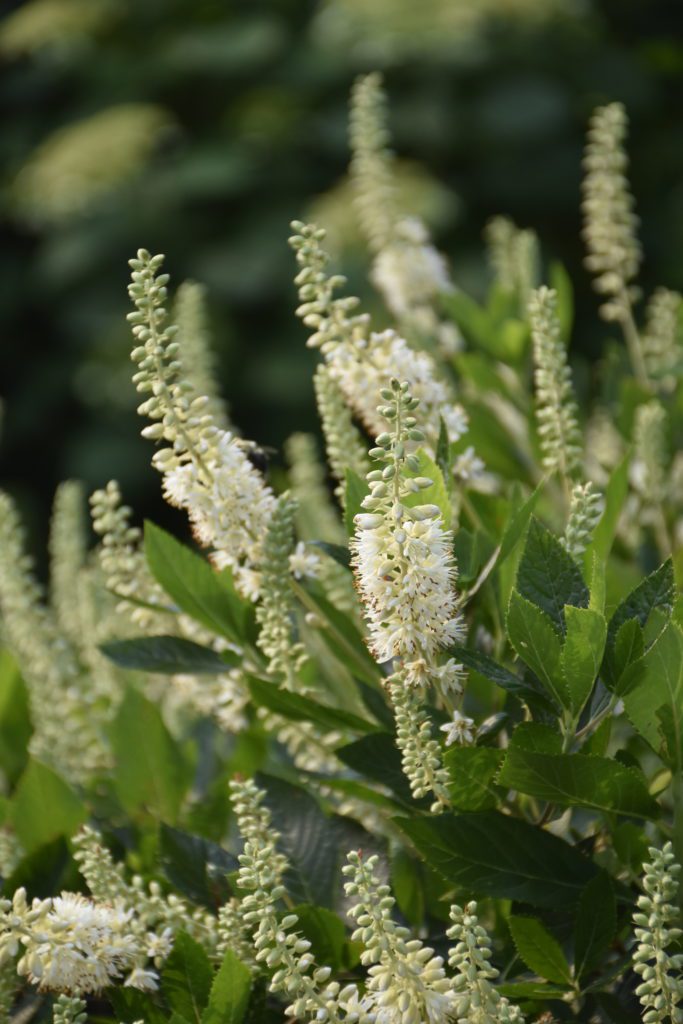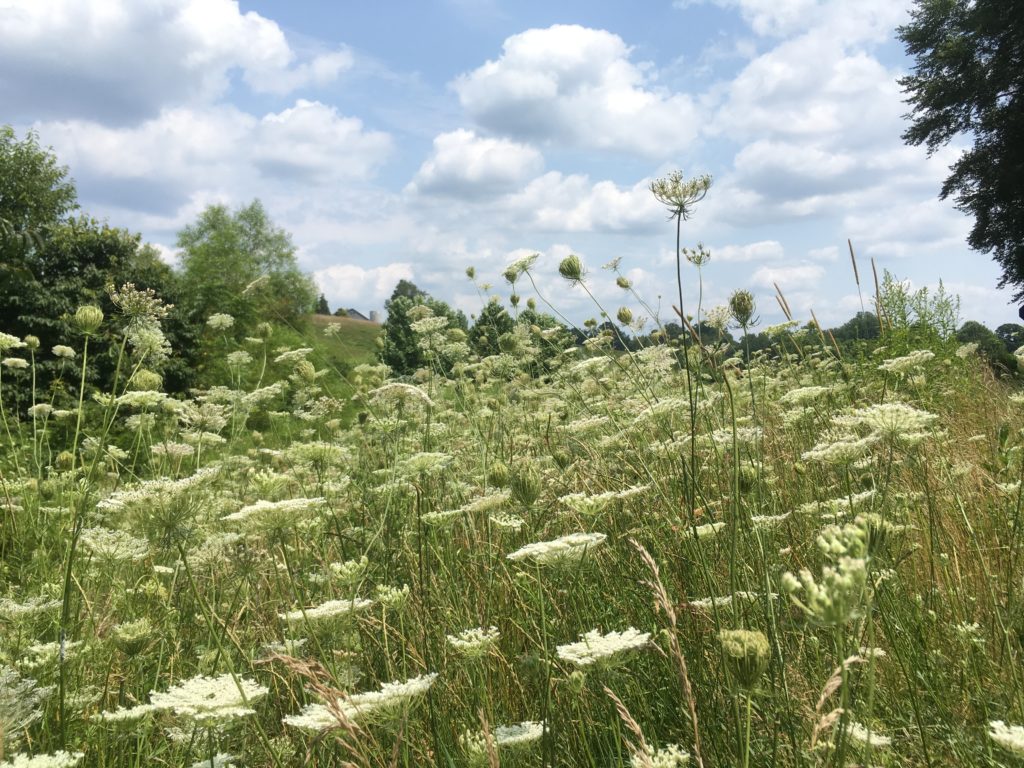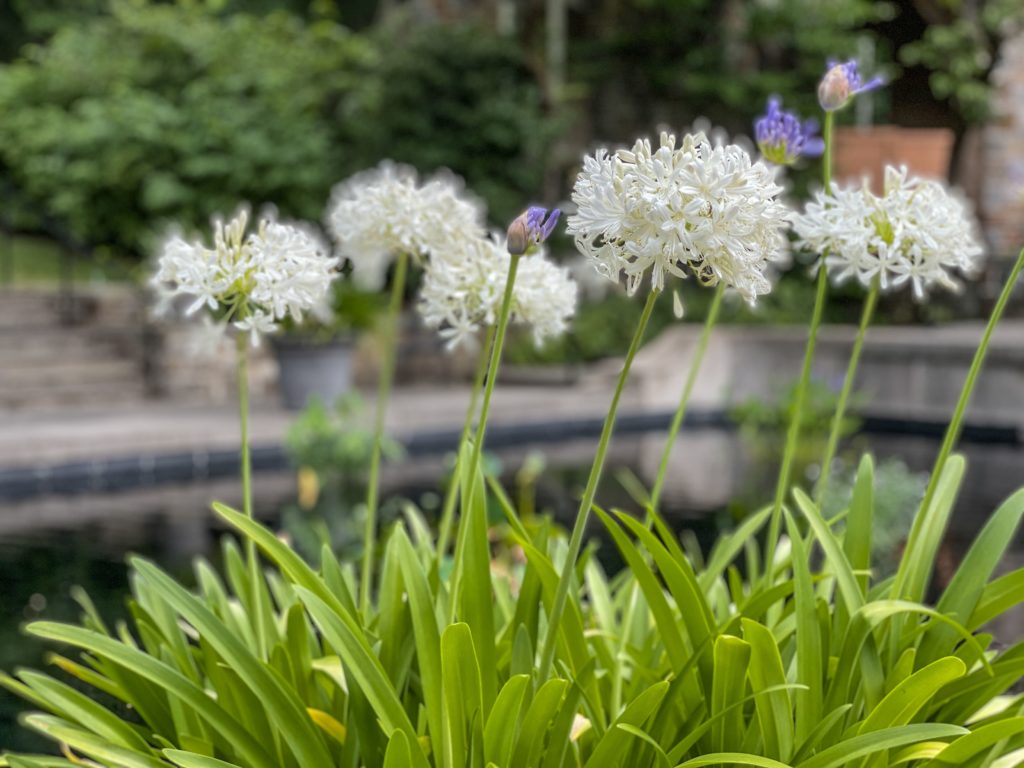Bloom Report #29
July 19, 2023
79F, Cloudy
Clethra alnifolia “Hummingbird” Summersweet cultivar

Songbirds and butterflies are attracted to summersweet clethra for its nectar and seeds. This plant is prized for its four seasons of interest. In winter they produce dried seed capsules which are delicate and lovely to behold. In the spring summersweet delights with silky, showy green leaves; summer is the season when they show off most, with spiky white or pink fragrant flowers. And at last, fall is when you’ll find their green leaves turn a vivid golden yellow setting the garden floor ablaze with warmth. How could ask for anything more?
Clethra is native to the eastern United States and there are multiple cultivars, such as the Hummingbird cv. seen here.
The Hummingbird summersweet clethra grows 2 to 3 feet high and wide making it a more rounded cultivar with white flower clusters that are larger and open earlier than the true species.
Plant clethra in part shade to full sun and give it some room to spread out by its suckering root system. These pants like a moist to wet area and can be easily pruned to keep control of, especially since they flower on new wood.
Find Summersweet “Hummingbird” in Winterthur’s Enchanted Woods.
Daucus carota Queen Anne’s Lace

Did you know?
Queen Anne’s Lace, also known as “wild carrot”, is actually a cousin to the carrot, and it produces a carrot-like taproot, just like a carrot. Both carry the scientific name Daucus carota.
They are not native to North America; they were brought here by early European settlers.
Queen Anne’s Lace can be found growing in 48 N. American states and is listed as an invasive plant in fourteen of those states. It does grow wild and will take over so one should plan its planting with caution. Don’t let their growing habits scare you, as they will fill a meadow garden with elegant blooms that will surely delight you.
Queen Anne’s Lace looks very much like poison hemlock, giant hogweed and cow parsley. Hemlock and hogweed are poisonous to humans, livestock and pets; be sure you know what you are picking or digging out before you start!
There are many common names given to this plant, such as Wild Carrot, Bishop’s Lace, Bee’s Nest and Bird’s Nest Flower. Take your pick of which one you like best!
You probably guessed that the name Queen Anne’s Lace comes from Queen Anne, wife of King James I. The truth is unsure as there are multiple stories surrounding the name and how the flower was connected to royalty. Most believe that it actually stems from Queen Anne II. The stories are interesting, read more below:
Agapanthus Lily of the Nile

Agapanthus is a perennial from the subfamily Agapanthoideae from the Amaryllidaceae family.
There are many cultivars of Agapanthus varying from white (shown here) to rich blue with a purple stripe and violet blue with a blue stripe.
The care and planting of this specimen depends completely on the variety plant you choose for your garden; are you planting a deciduous or an evergreen agapanthus? Knowing this makes all the difference when planning Lily of the Nile for your garden.
Find information on the care of Agapanthus by visiting The Spruce’s online site.
Search the Winterthur Garden map to find your favorite garden area or to plot an exciting new area to explore!
What’s blooming at Winterthur now? Download the full report below:
Bloom Report presented by: Pauline Myers